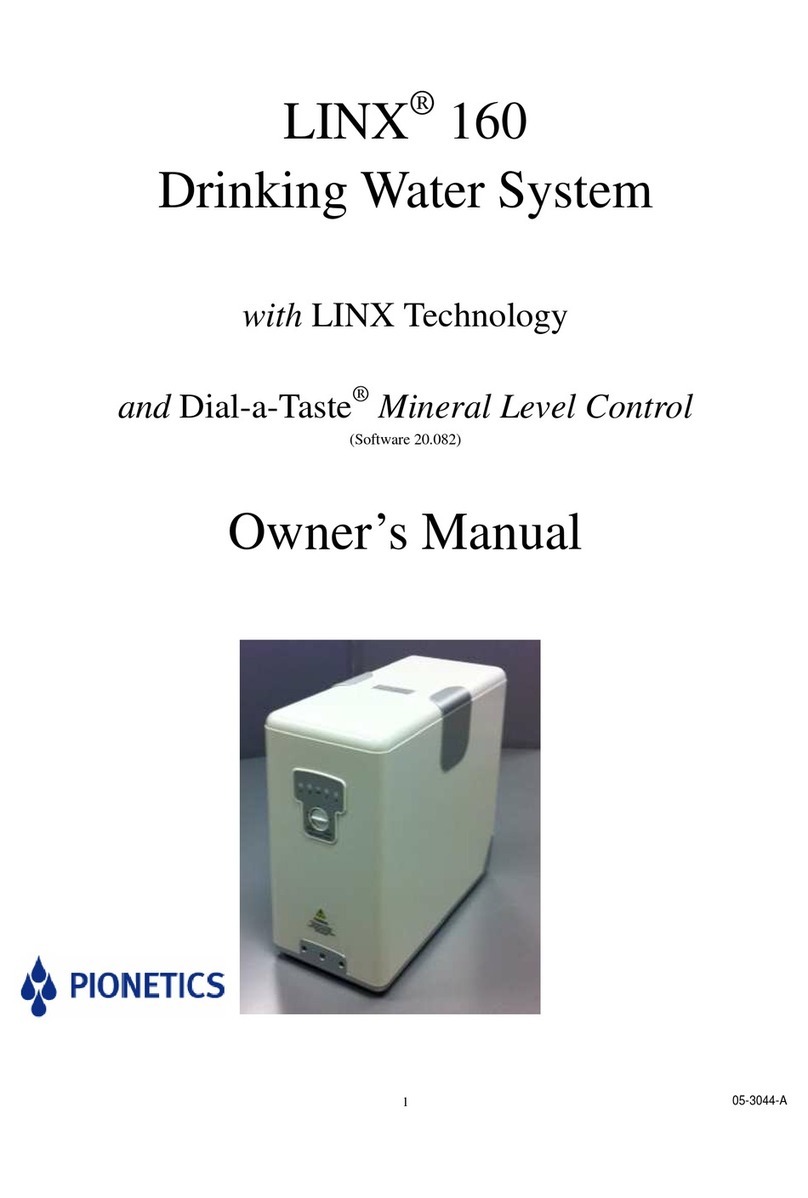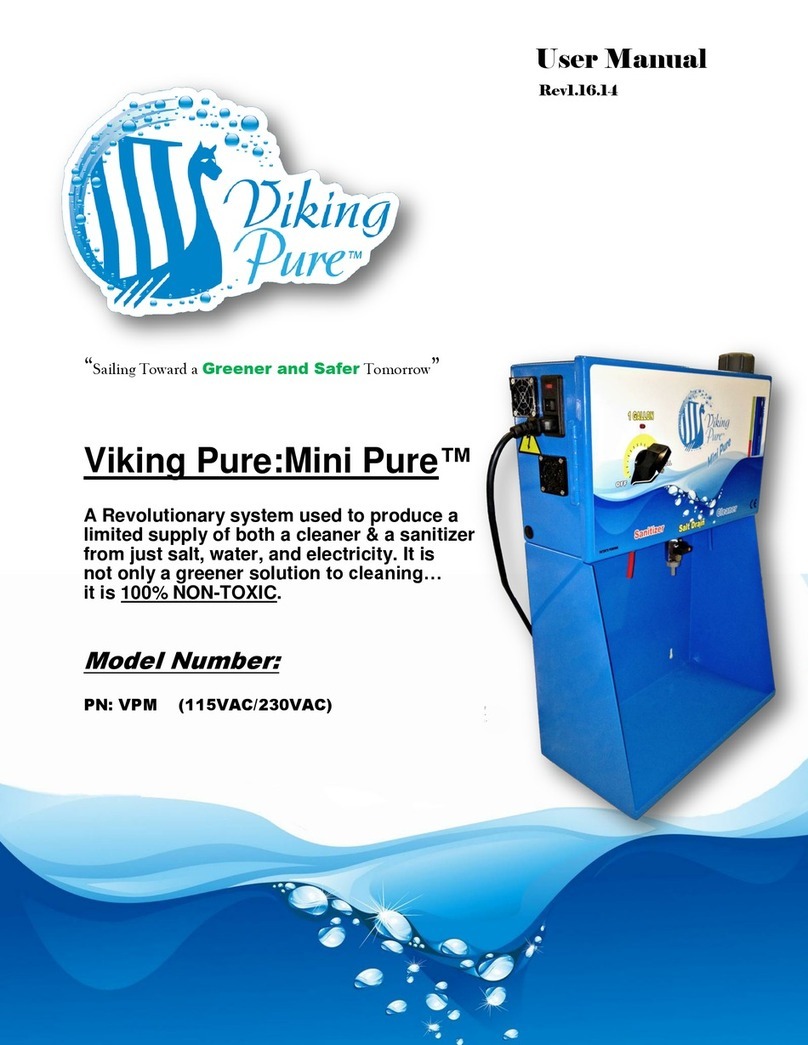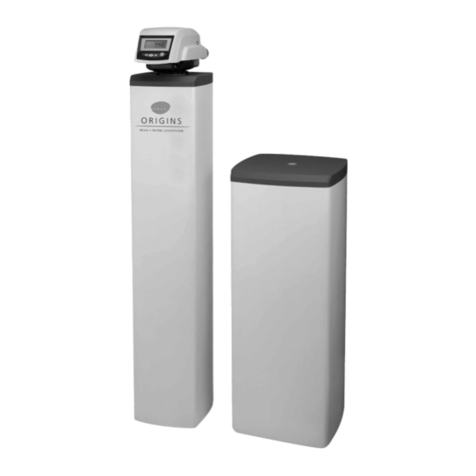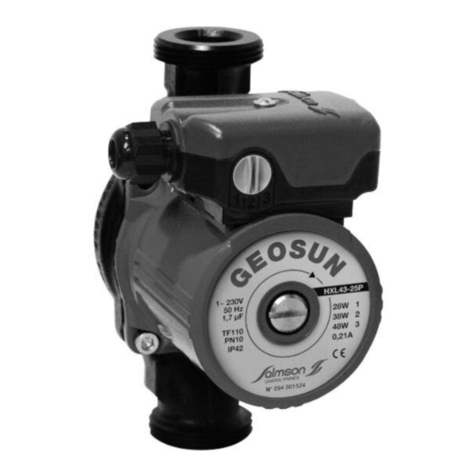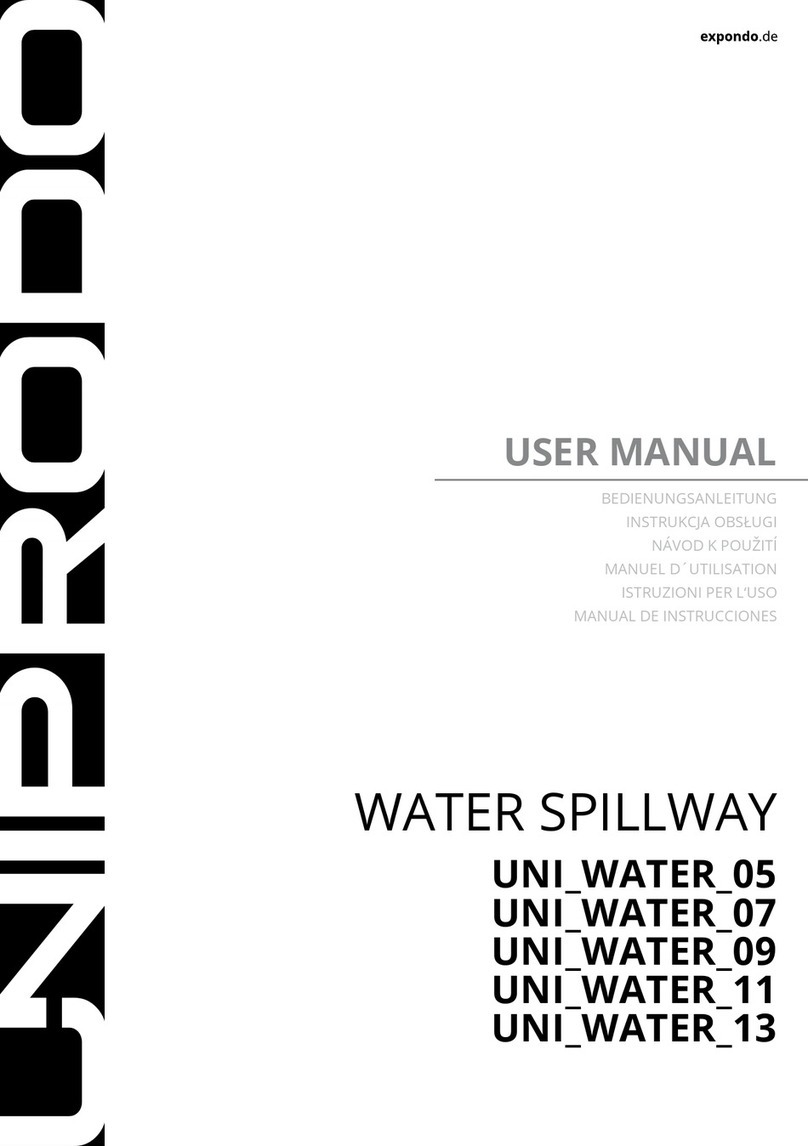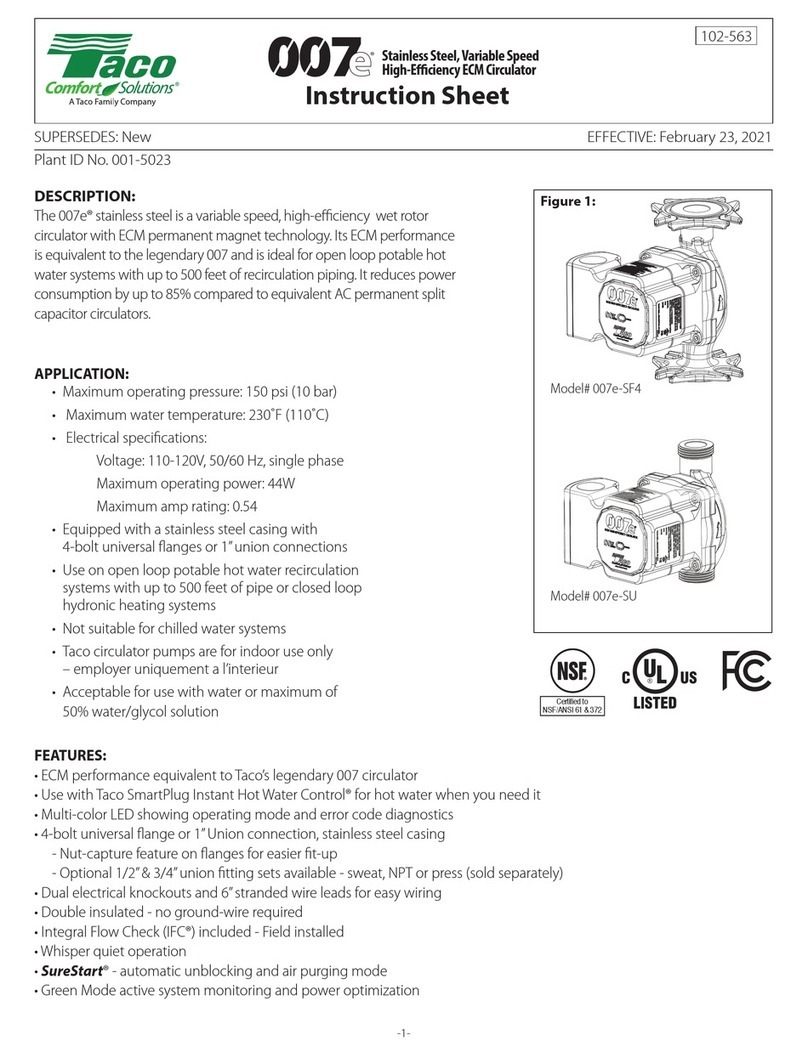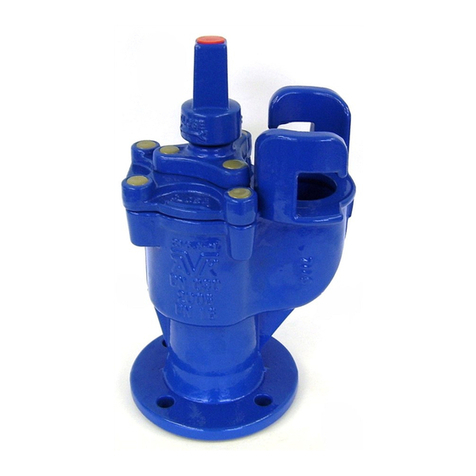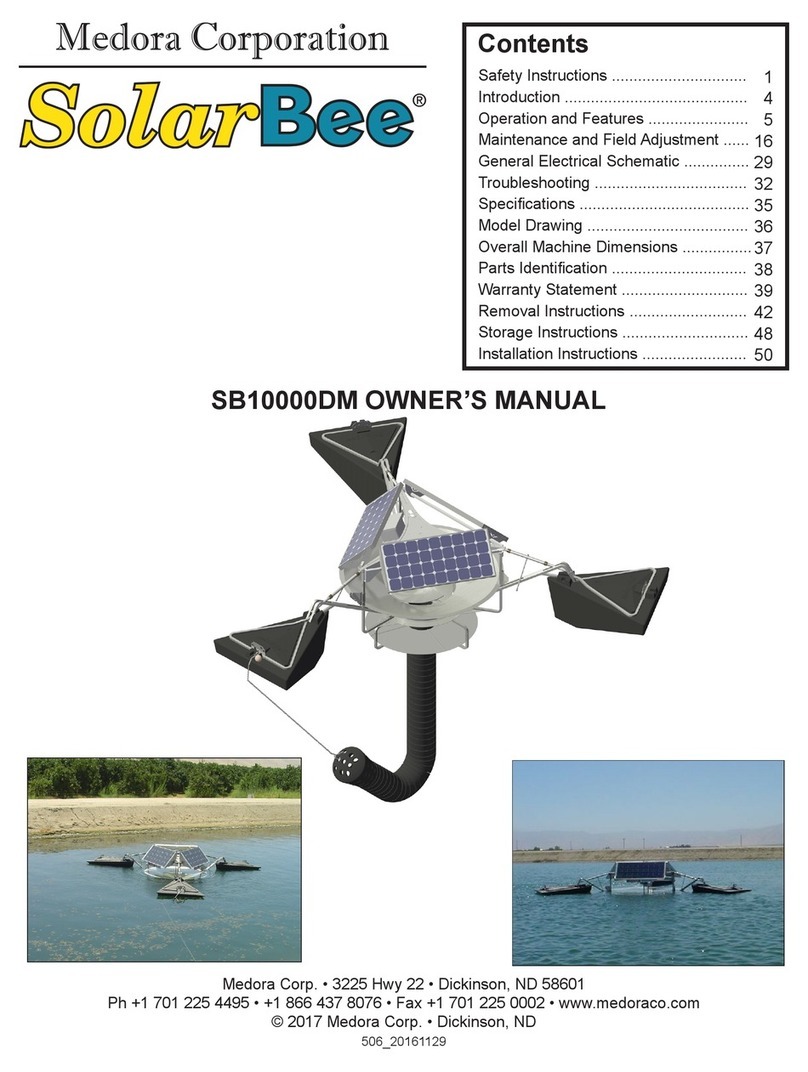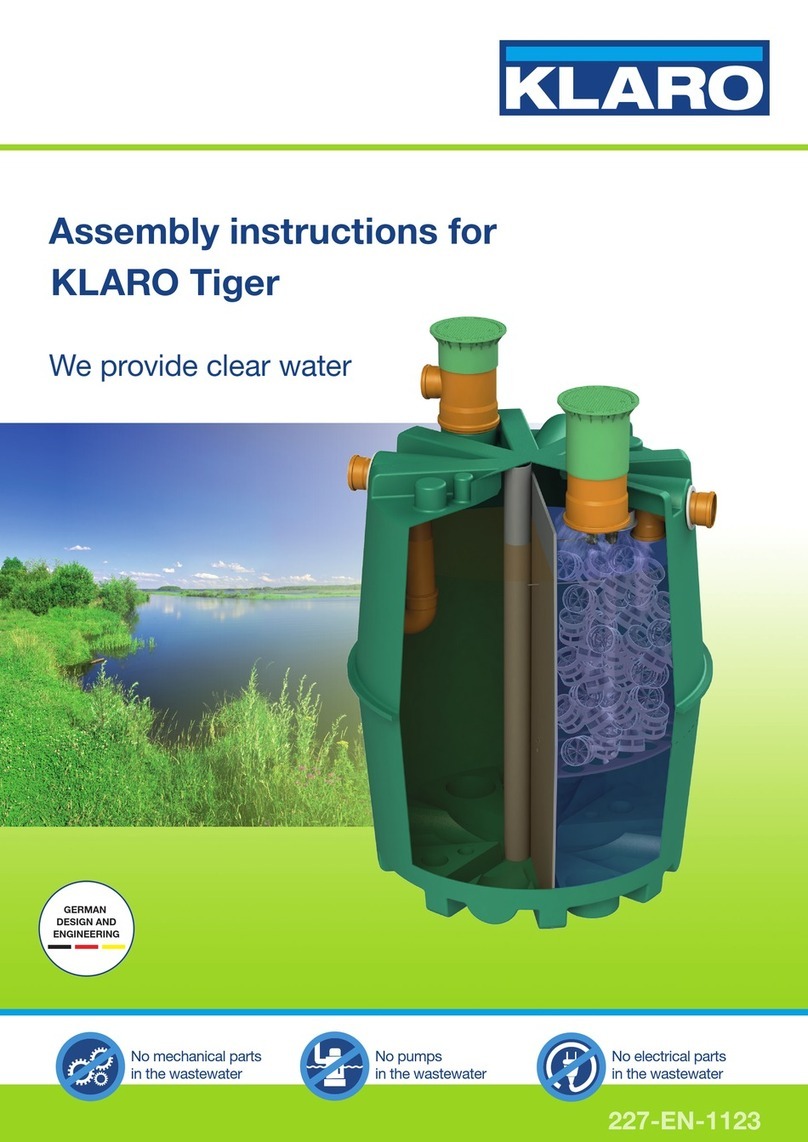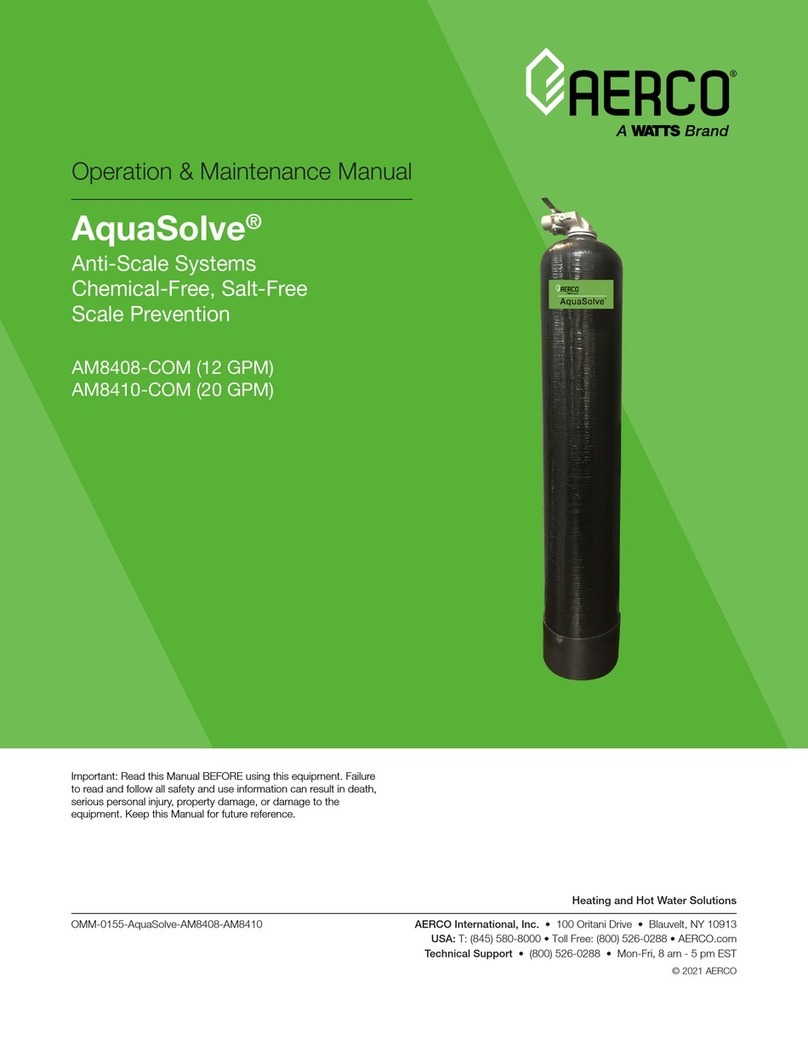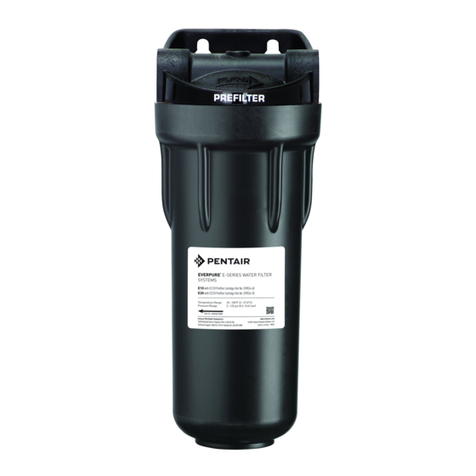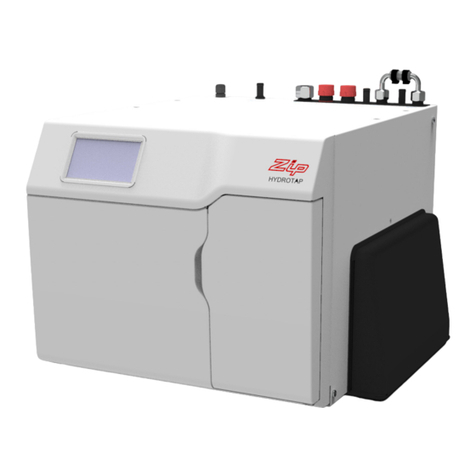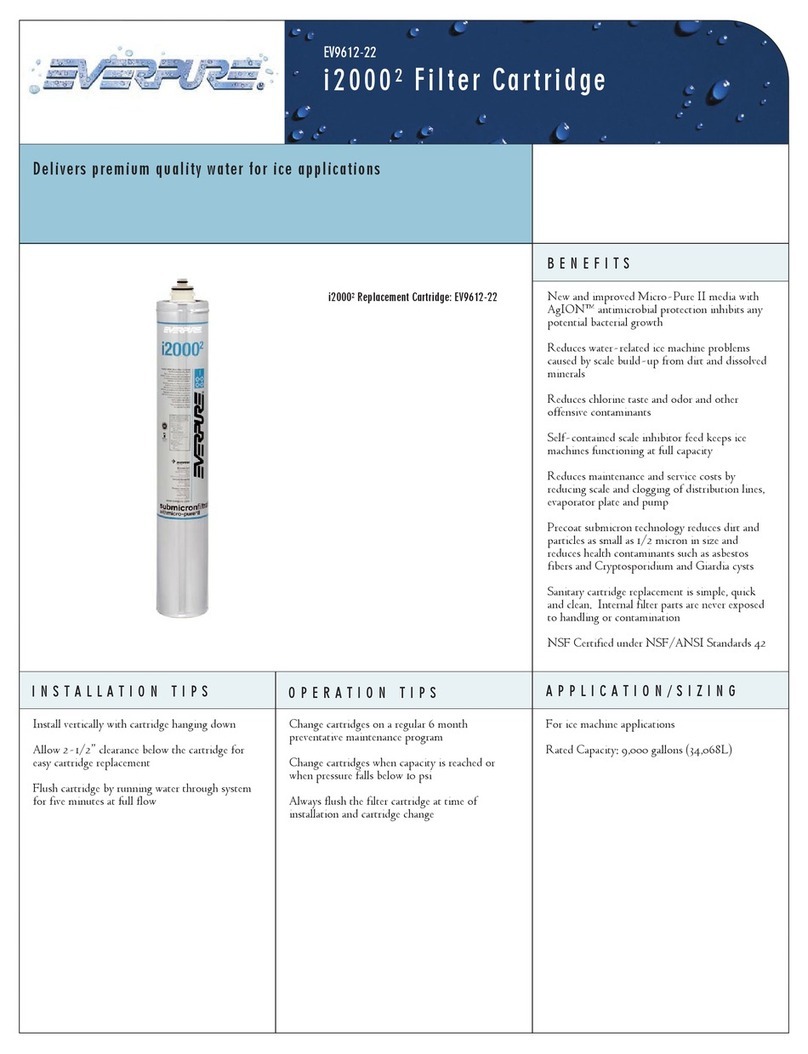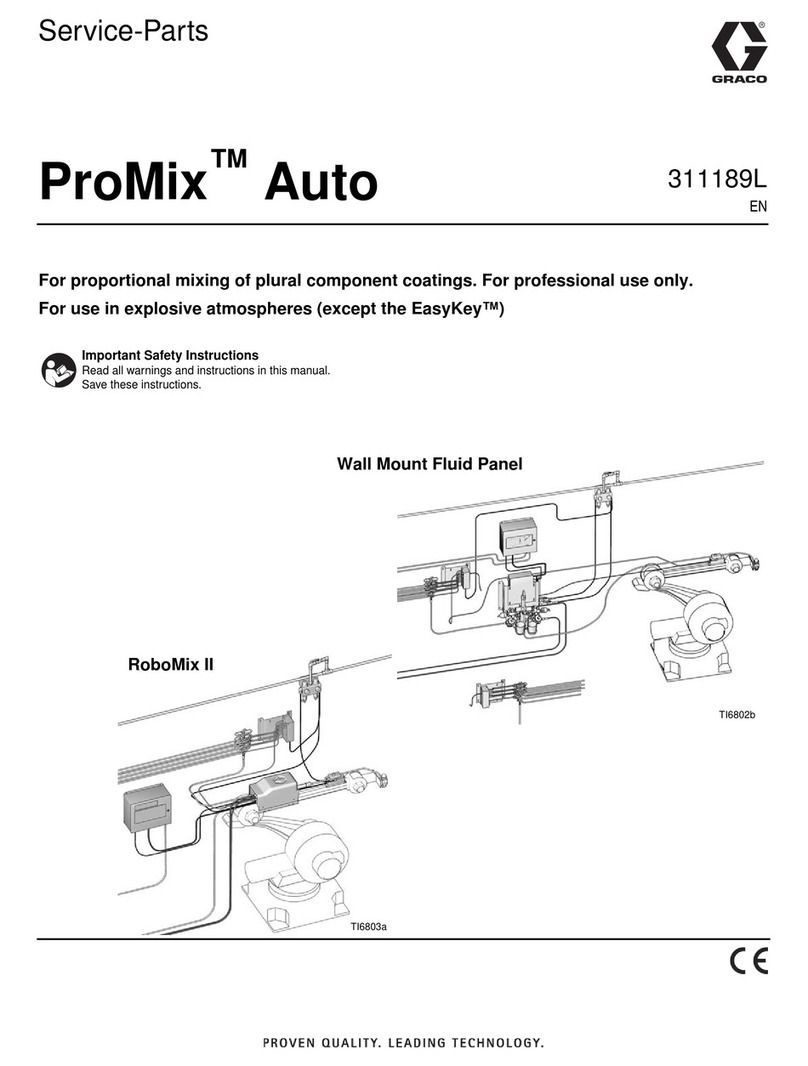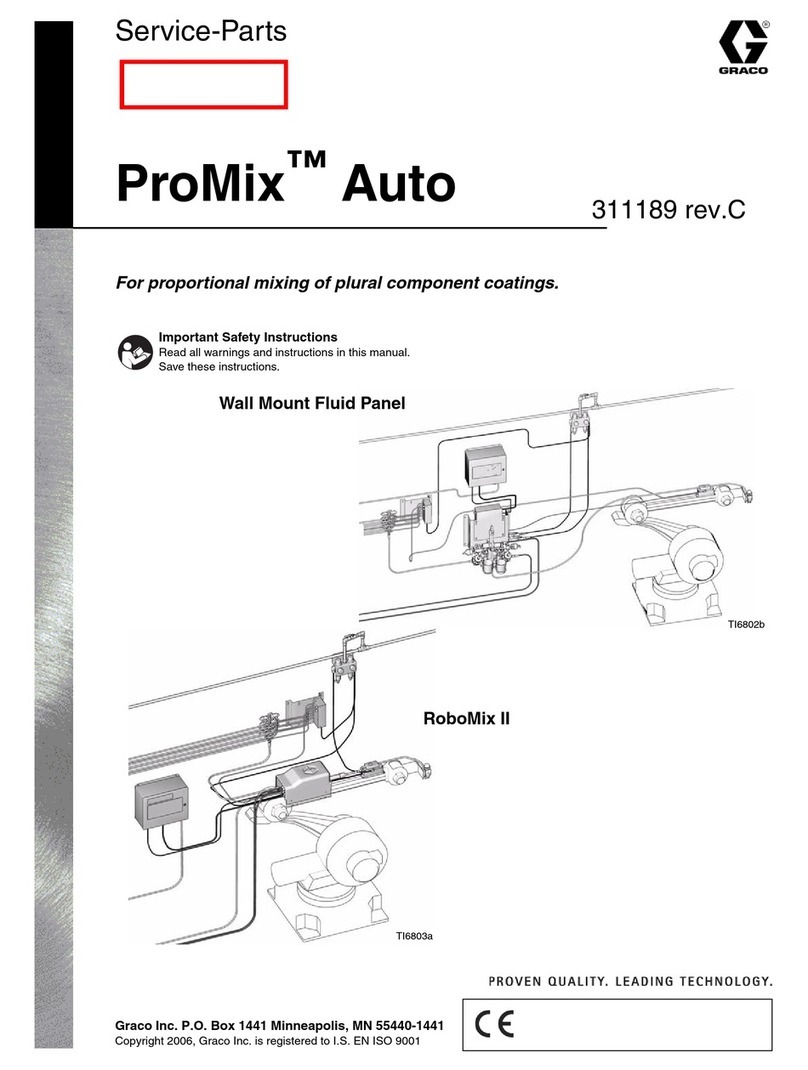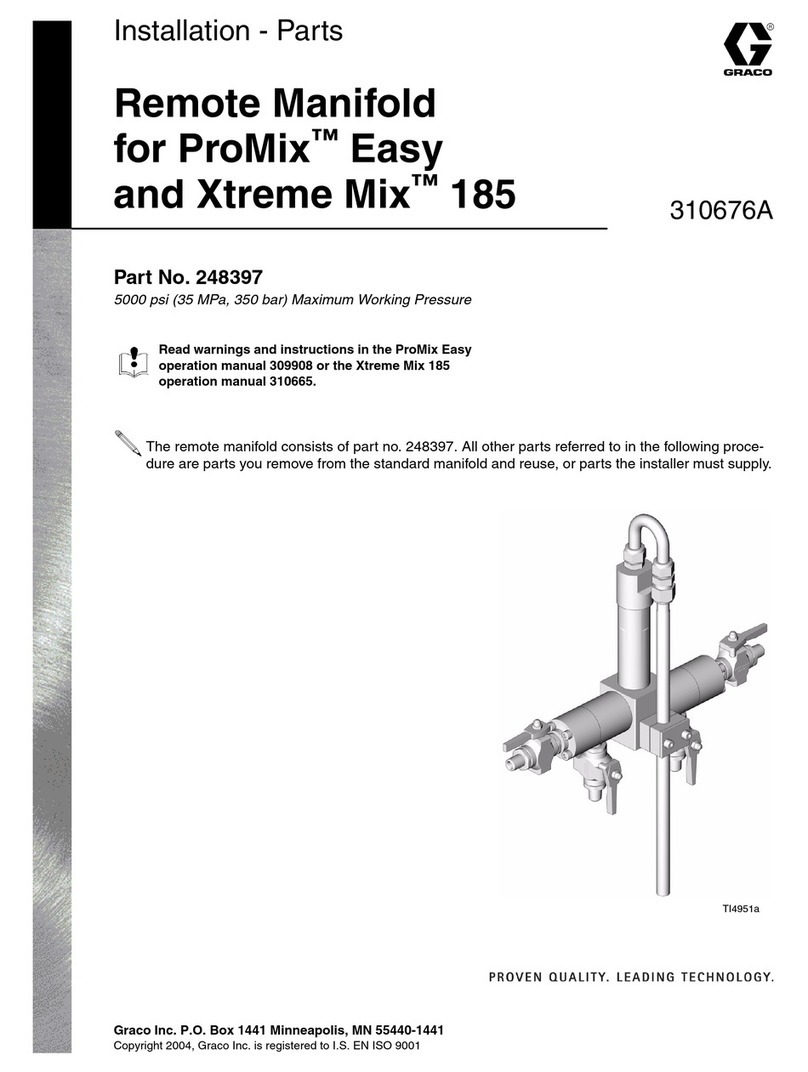
FIRE, EXPLOSION, OR ELECTRIC SHOCK HAZARD
Voltage
Discharge Procedure
To
reduce the risk of electric shock, which could cause serious
injury
, AL
WA
YS follow this procedure when entering the safety
fence.
1. Disengage
the air line interlock.
This will turn of
f the air to
the
gun and trigger the dump switch to discharge the
elec
-
trical
charge.
2. Enter
the safety fence area and remove the grounding rod
from
the fence. Grasp the
grounding rod by the hook end of
the
handle. T
ouch the exposed wire of the
grounding rod to
a
metal surface of the fluid source; see Fig 10, page 13. If
an arc is detected, correct the problem before doing any-
thing
further with the system. See
TROUBLESHOOTING
on
page 21.
3. Before leaving the safety fence, ALWAYS make sure that
the paint source is connected to the voltage control.
Flushing and Cleaning Safety
To
reduce the risk of static
sparking or splashing, always follow
the
Pressure Relief Procedure
, below
, before flushing.
Be
sure
the spray gun ES valve lever is OFF and the equip
-
ment
has been properly grounded before flushing or clean
-
ing
any part of the spray system.
Use
the lowest possible pressure to flush. T
rigger the gun into
a
grounded
metal waste container
.
ALWA
YS use solvents with a flash point above 140
F
(60
C)
to
flush, purge, or clean the gun or spray system.
ALWAYS
remove all solvent from the system before reactivating
the
spray gun.
Use
only non-sparking tools to clean residue from the booth and
hangers.
Ventilate
the Spray Booth
To
prevent hazardous concentrations of toxic and/or
flammable
vapors,
spray only in a properly ventilated spray booth.
Check
and follow all National, State and Local codes regarding
air exhaust velocity requirements. Check and follow all local
safety
and fire codes and OSHA standard 1910.107.
NEVER operate the spray gun unless the ventilating fans are
operating.
EQUIPMENT MISUSE HAZARD
General
Safety
Any misuse of the spray equipment or accessories, such as
over pressurizing, modifying parts, using incompatible chemi-
cals and fluids, or using worn or damaged parts, can cause
them
to rupture and result in serious bodily injury
, fire, explosion
or
property damage.
NEVER
point the spray gun at anyone or at any part of the body
.
NEVER
put hand or fingers over the spray nozzle.
ALWAYS
follow the
V
oltage Discharge Procedure
and
Pres-
sure Relief Procedure
, at right, before cleaning or removing
the
fluid nozzle or servicing any system equipment.
NEVER try to stop or deflect leaks with your hand or body
.
NEVER alter or modify any part of this equipment; doing so
could
cause it to malfunction.
NEVER enter a high voltage or hazardous area until after all
high
voltage equipment has been discharged. A
safety fence
air
line
interlock
MUST be installed to shut of
f the
high voltage any
-
time
the gate is opened.
CHECK all spray equipment regularly and repair or replace
worn
or damaged parts immediately
.
System
Pressure
This system has a
MAXIMUM WORKING PRESSURE
of 100
psi (7 bar). Never exceed the maximum working pressure of
any component or accessory used in the system.
Fluid
Compatibility
Only use fluids having flashpoints above 140F (60C) and
less than 20%, by weight, organic solvent concentration. BE
SURE all fluids and solvents used are chemically compatible
with wetted parts in your system. (The gun wetted parts are
listed on the back page.) Always read the fluid and solvent
manufacturer’s
literature before using the fluid or solvent in
the
system.
Pressure
Relief Procedure
To
reduce the risk of serious bodily injury
, including splashing
in
the eyes or on the skin, injury from moving parts or electric
shock,
AL
WA
YS follow this procedure when shutting of
f the sys
-
tem,
when checking or
servicing any part of the spray system,
when installing, cleaning or changing fluid nozzles, and when
-
ever
you stop spraying.
1. T
urn the spray gun ES On-Off valve lever to OFF
.
2.
Follow the
V
oltage Discharge Procedure
, above.
3. T
urn of
f the fluid supply to the gun.
4. Trigger the gun into a
grounded
metal waste container to
relieve
air and fluid pressure.
5. Relieve
fluid pressure in the fluid supply unit as instructed
in
your fluid supply unit manual.
HOSE SAFETY
TIGHTEN
all fluid connections securely before each use.
HANDLE AND ROUTE HOSES CAREFULLY. The fluid hose
MUST be routed over head from the safety fence to the spray
area. Do not pull on hoses to move equipment.
DO
NOT use fluids or solvents that are not compatible with the
inner tube and cover of the hose. Read
Fluid Compatibility
,
above,
and refer to the
hose description in
ACCESSORIES
on
page
42.
NEVER
use a damaged hose. Before each use, check the en
-
tire
hose for cuts,
leaks, abrasion, bulging cover
, or damage or
movement of the hose couplings. If any of these conditions
exist,
replace the hose immediately
.
IMPORTANT
United
States Government safety standards have been adopted under the Occupational
Safety and Health Act. These standards––particularly the
General Standards, Part 1910.107 and any other appropriate regulations––should be consulted in connection with the installation, operation, and
maintenance of electrostatic spray painting equipment.




















